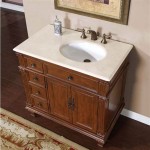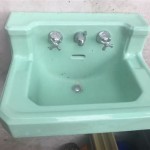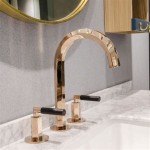Installing a Bathroom Sink Plumbing: A Comprehensive Guide
Installing a bathroom sink may seem like a daunting task, but with proper preparation and the right tools, it can be a manageable DIY project. Understanding the essential aspects of bathroom sink plumbing is crucial for a successful installation.
Understanding the Components
Before beginning the installation, familiarize yourself with the components involved:
- Sink: The basin that holds water and drains it.
- Faucet: The fixture that controls the flow of water.
- Drain assembly: The mechanism that allows water to drain from the sink.
- Supply lines: The pipes that connect the sink to the water supply.
- P-trap: A U-shaped pipe that prevents sewer gases from entering the house.
Choosing the Right Materials
Select high-quality materials for a durable and reliable installation:
- Sink: Consider materials such as porcelain, ceramic, or glass for their durability and ease of cleaning.
- Faucet: Opt for a faucet with a finish that matches your bathroom décor and is made of corrosion-resistant materials.
- Drain assembly: Choose a drain assembly with a lift rod for easy operation.
- Supply lines: Use flexible supply lines that are resistant to kinking or crimping.
- P-trap: Select a P-trap made of durable materials such as plastic or brass.
Step-by-Step Installation Guide
Once you have gathered your materials, follow these steps for a successful installation:
- Remove the old sink: Shut off the water supply, disconnect the supply lines and drain assembly, and carefully remove the old sink.
- Prepare the sink: Install the drain assembly and faucet onto the new sink.
- Install the sink: Place the new sink in its designated location and connect the supply lines and drain assembly.
- Secure the sink: Apply a bead of silicone caulk around the edges of the sink to prevent leaks.
- Test the installation: Turn on the water supply and check for any leaks. Rinse the sink to remove any debris.
Troubleshooting Common Problems
If you encounter any issues during the installation, these tips may help:
- Leaks: Tighten loose connections, apply more caulk, or replace faulty components.
- Clogged drain: Use a drain snake or chemical drain cleaner to remove obstructions.
- No hot water: Check the water heater and ensure it is functioning properly.
- Loose faucet: Tighten the mounting bolts or replace the faucet cartridge.
Conclusion
Installing a bathroom sink plumbing may require some effort, but it is a rewarding task that can enhance the functionality and aesthetics of your space. By understanding the essential aspects, choosing the right materials, and following the step-by-step guide, you can confidently tackle this project and enjoy a refreshed and well-functioning bathroom sink.

How To Fit A Bathroom Sink Diy Guides Victorian Plumbing
How To Install Bathroom Sink Drain Queen Bee Of Honey Dos

Bathroom Sink Plumbing Installation Diy Montreal

How To Fit A Bathroom Sink Diy Guides Victorian Plumbing

Bathroom Sink Plumbing Installation Diy Montreal

Plumbing Repairs How To Repair Fix It Diy Install Bathroom Sink

Here S How Install A Bathroom Pedestal Sink

How To Replace And Install A Bathroom Sink
How To Install Bathroom Sink Drain Queen Bee Of Honey Dos

How To Install A Pipe From Sink Drain Wall Ehow







